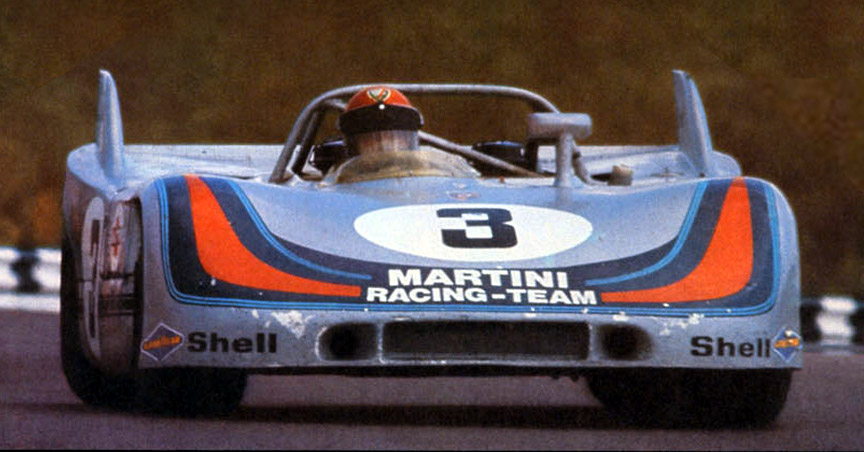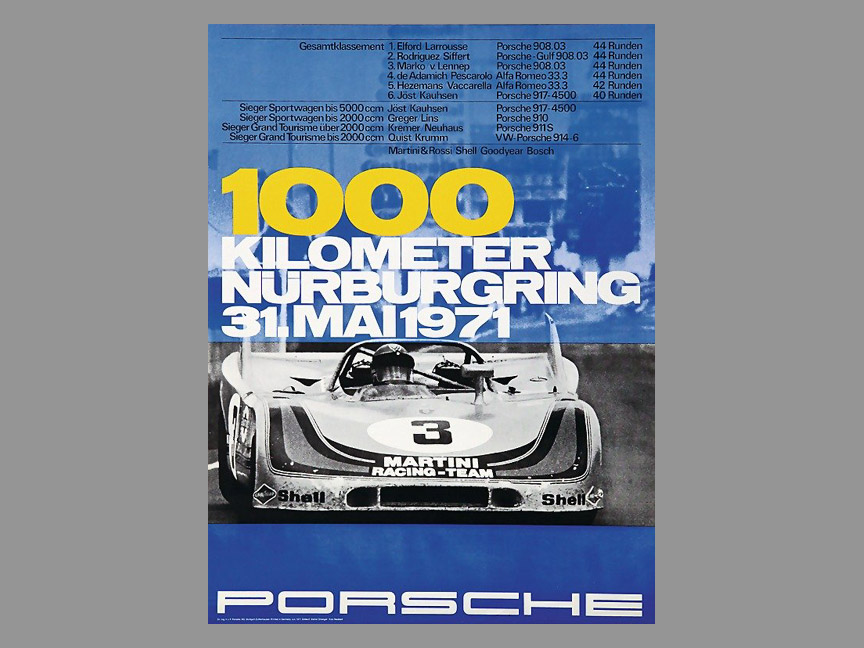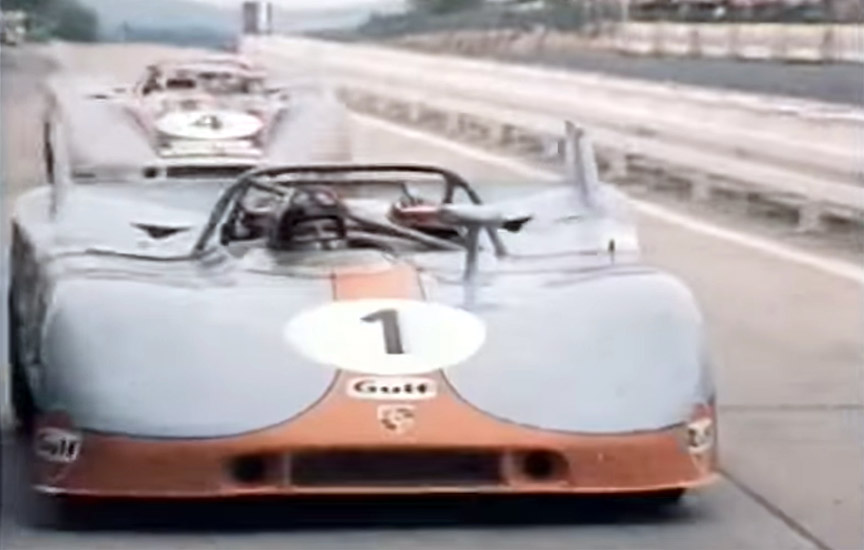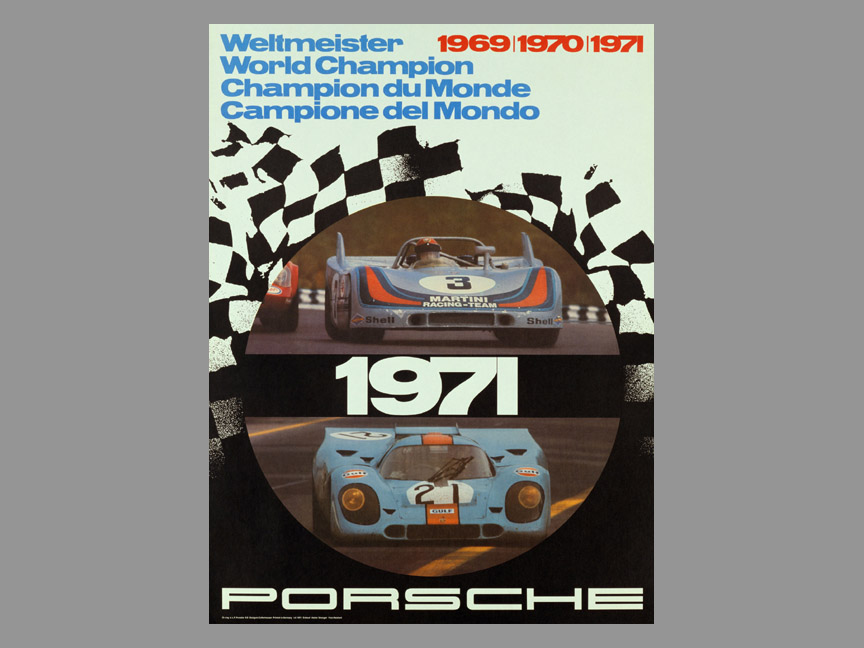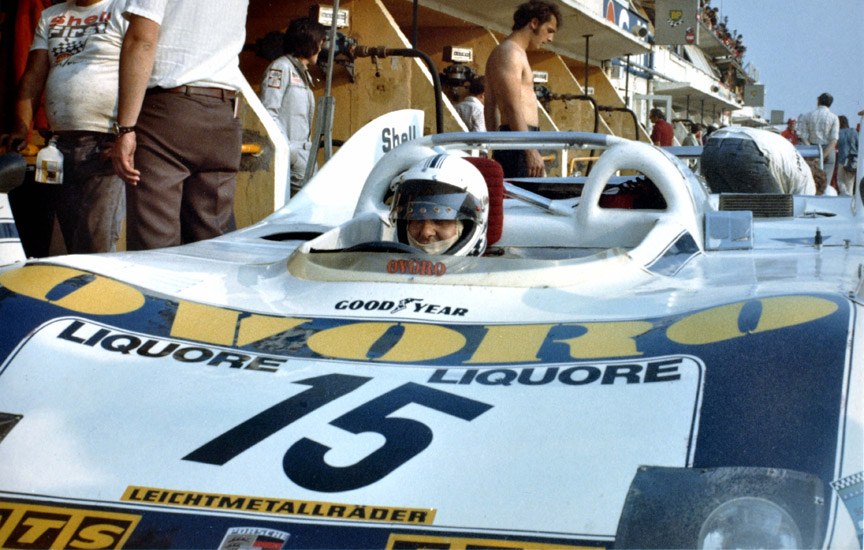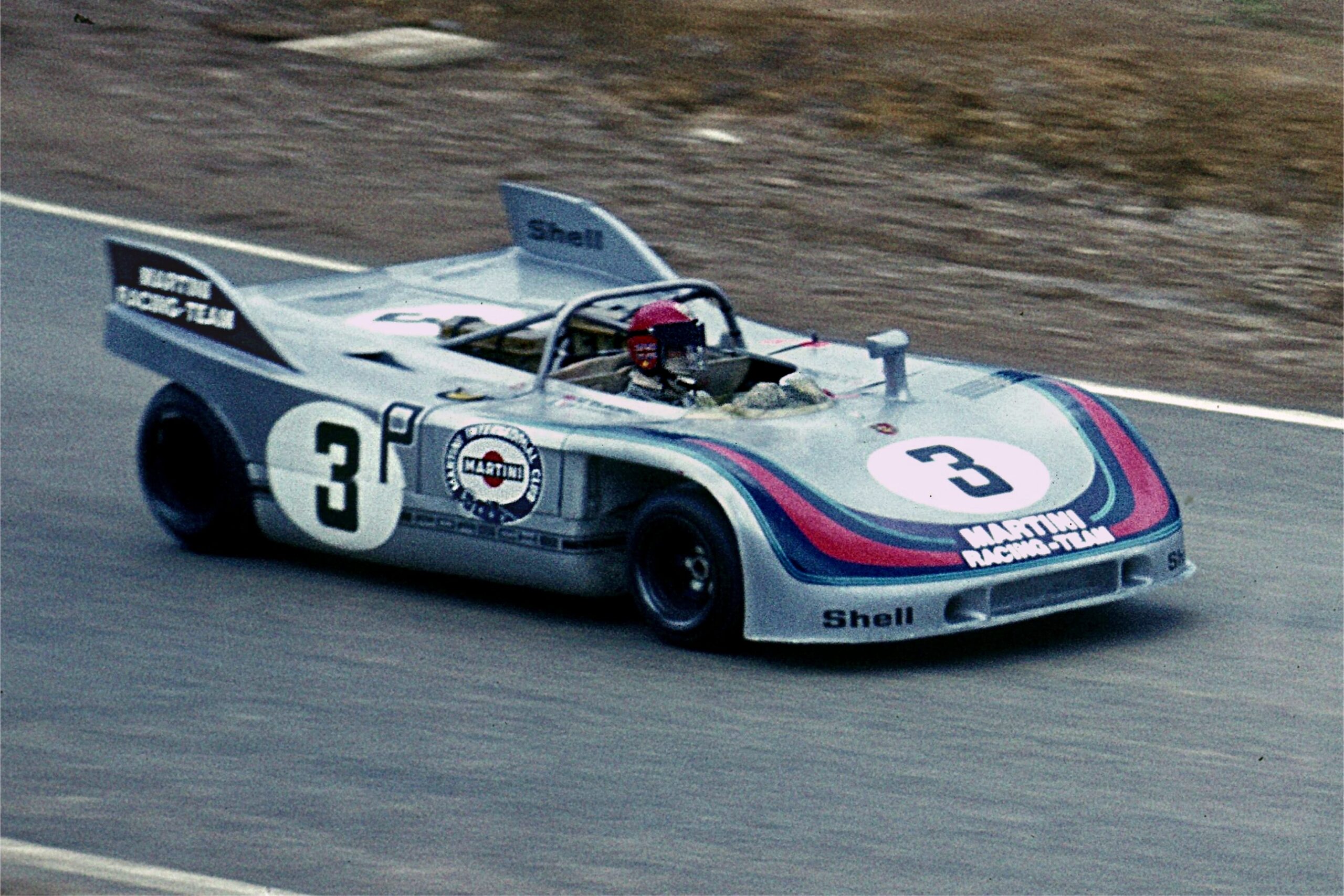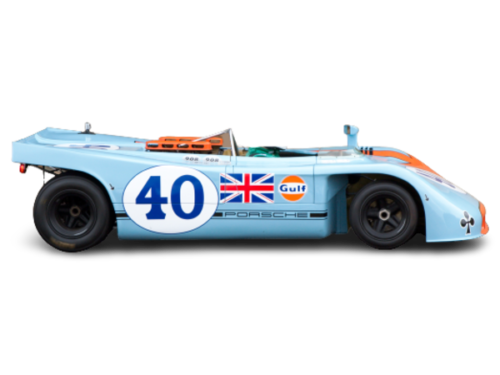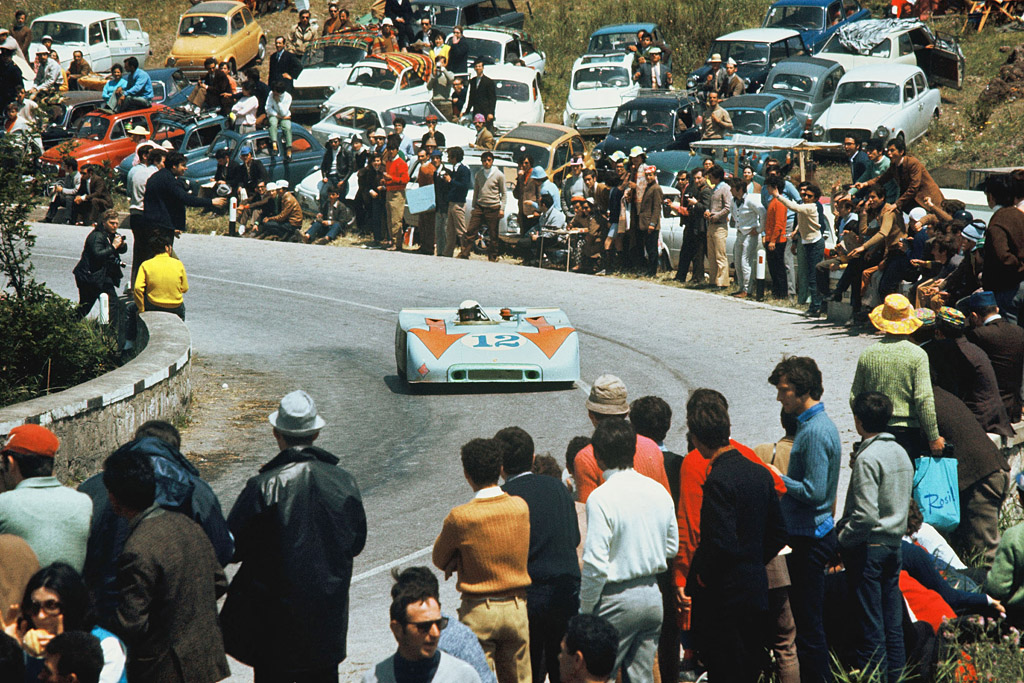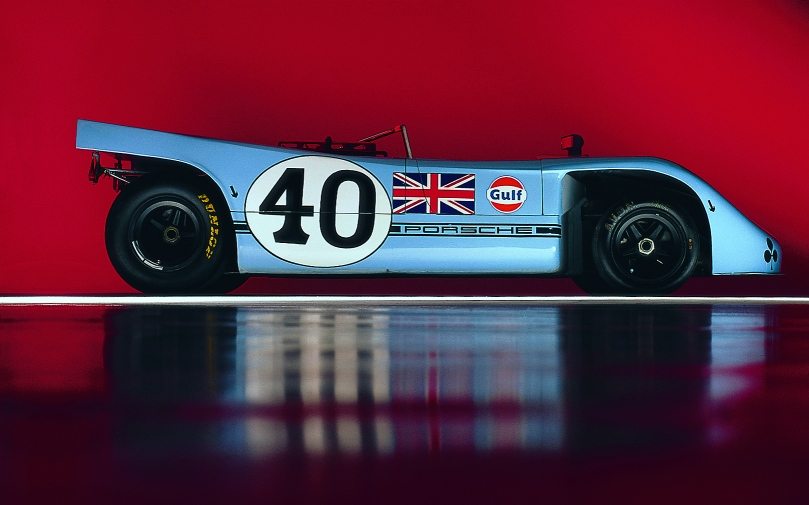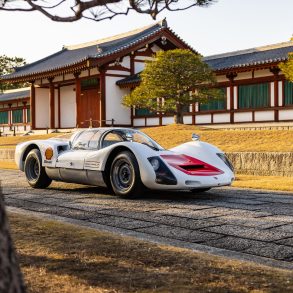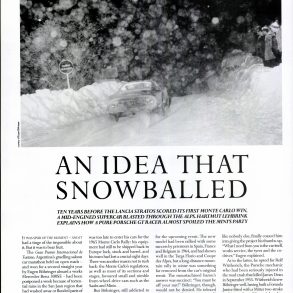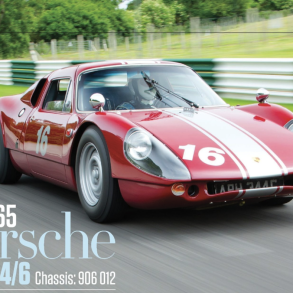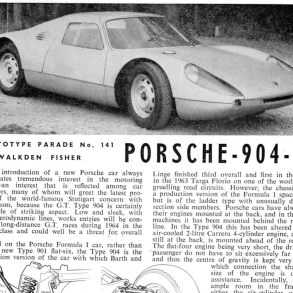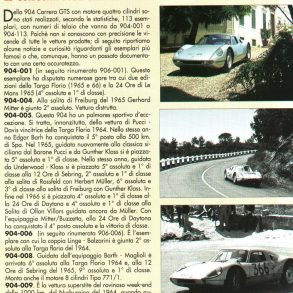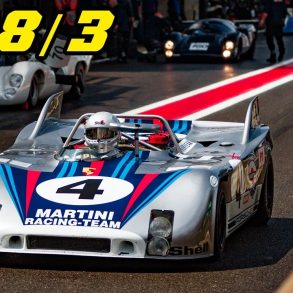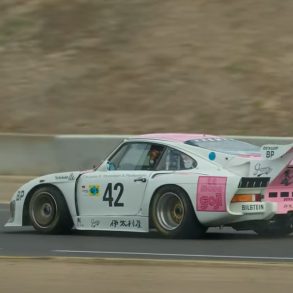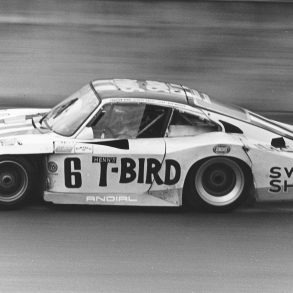Porsche 908/3 Spyder (1969 – 1971)
Although Porsche concentrated primarily on development of its twelve cylinder 917 from the middle of 1969, the eight cylinder 908 was also developed further. This 908 received a completely new tubular frame based on that of the 909 Bergspyder and its three liter engine was moved forward by mounting the gearbox ahead of the differential to achieve more equal weight distribution.
The 903/3 prototype was built for the sole purpose of winning the Targa Florio and Nürburgring legs of the world Championship. The 908 specialized in lightweight design through the use of a 48 lbs titanium space frame and 26 lbs body. Known as the Porche miracle by Italians, the 908/3s won the Targa Florio and Nürburgring outright in 1970. The car was so effective it won championship around up to 1980 without concern over fatigue due to the lightweight components.
Thus Type 908/03 was basically conceived for tight twisty circuits that demanded high levels of maneuverability. Consequently, the size of the sports car was kept to a minimum and it weighs a mere 540 kilos. The driver’s seat is even mounted on the right-hand side to ensure better weight distribution on the predominately clockwise circuits the car was to race on.
The flat-eight three litre engine produced 350hp enabling the 908/03 to obtain a top speed of approximately 275 km/h (172 mph), but it was the cars agility that was to ensure success during its racing career.
As pre-determined by its extreme fitness for purpose, in 1970 and 1971 the Porsche factory only entered the 908/03 in four races, yet managed to win three of them. Taking its debut victory in the 1970 Targa Florio (Jo Stiffert/Brian Redman), the only thing as impressive as the car’s speed around the tortuous mountain circuit in Sicily was the conspicuous paint schemes of the factory cars. That year’s Nurburgring 1000km race saw the 908/03 again finish first and second, securing the World Championship for Makes for Porsche.
The 1971 Nurburgring 1000km saw three out of the four 908/03s which started, finish in the first three places. The 908/03 continued to win in the hands of privateer teams for many years and even finished first overall in the 1980 Nurburgring 1000km.
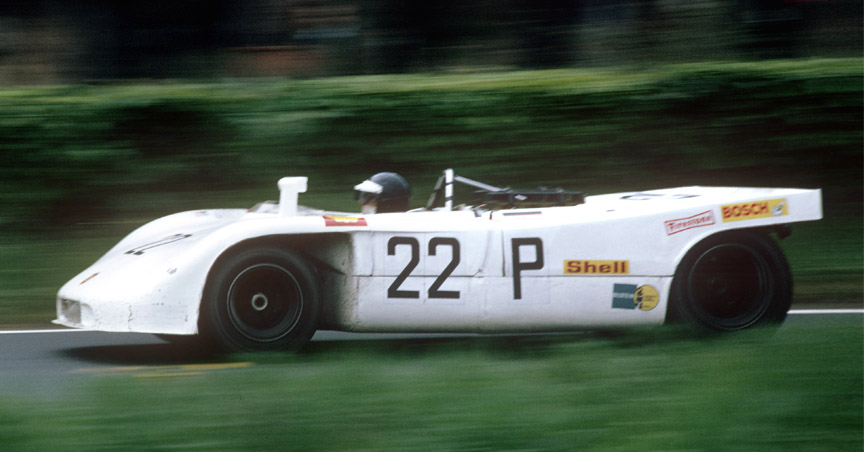
Porsche 908/03 Spyder (1970)
Premiere: 1970 May 3 at Targa Florio / Engine: 3.0-litre flat-8
Porsche introduced the 908/03 for the 1970 Targa Florio. The 908/03 used the know-how from the superlightweight 909 Bergspyder. The 3-litre 908/03 was just 4″/10 cm longer than the 2-litre 909, so with a length of 139″/354 cm it is a small car (it does look bigger on the photos). Working under Ferdinand Piëch, the project manager was Manfred Bantle. While the 909 was designed for tracks of 20 km in length, the 908/03 had to withstand 1000 km races – so, you see, it couldn’t be made as light as the 909 was. Still, it was very light. The aluminium frame weighed just ~30 kg/66 lb and the foam-reinforced plastic skin only 12 kg/26 lb. Piëch wasn’t ready to compromise on weight, so his response to engineers usually was “Too heavy!”. For an extreme example, the screws from the braking lamps were removed and the lenses glued to save a few grams. The 1970 908/03 finally came in at 545 kg/1200 lb. The 908/03 was built because the 917 was too large and heavy for the twisty tracks like the Targa Florio..
The exterior design was a work of Eugen Kolb based on the suggestion from the aerodynamics engineer Hermann Burst. Like in the 909, the transmission was positioned in front of the differential, forcing the engine and driver position further forward. With this the “ideal for racing” 45/55 weight distribution was achieved. The drivers didn’t like the frontal and upright seating position until they saw the lap times.
The new cars with inner-vented and perforated brake discs were an immediate success at the 1970 Targa Florio and Porsche took 1-2 victory. The winning 908/03 Spyder #12 was piloted by the talented tandem of Jo Siffert/Brian Redman and second place went to car #40 of Leo Kinnunen/Pedro Rodriguez. Again a Porsche 1-2-3 victory (or actually a 1-2-3-4 victory) was spoiled by a Ferrari. 4th place went to 908/02 K Spyder of Gijs van Lennep/Hans Laine and 5th place to 908/03 Spyder #36 of Björn Waldegaard/Richard Attwood. The Porsche Salzburg entered 908/03 #20 had to retire because of an accident.
The first version of the 908/03 (1970 model) was entered only in two races, the second one being the Nürburgring 1000 km on May 31, 1970, where a 1-2 victory was taken again. The winning car was the same (chassis 008) which won the Targa Florio. The car had a completely different color scheme, or, actually, no color scheme at all. It was piloted to victory by Kurt Ahrens and Vic Elford. They were followed by 908/03 #15 of Hans Herrmann/Richard Attwood and third place went to a 5-litre Ferrari.
A Visual History
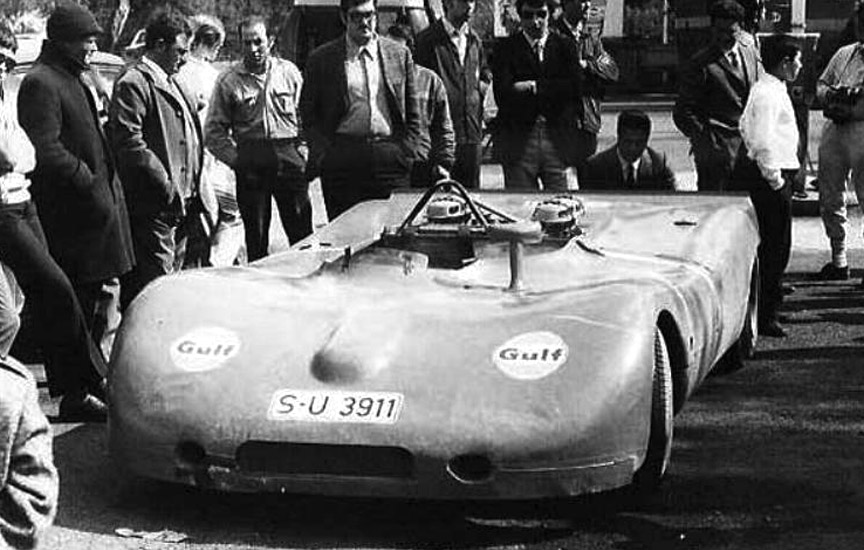
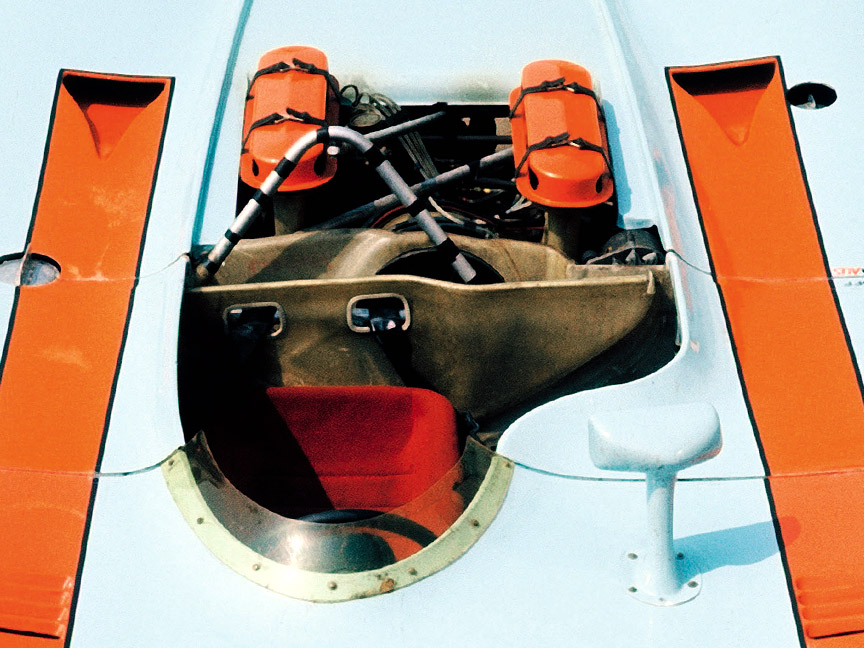
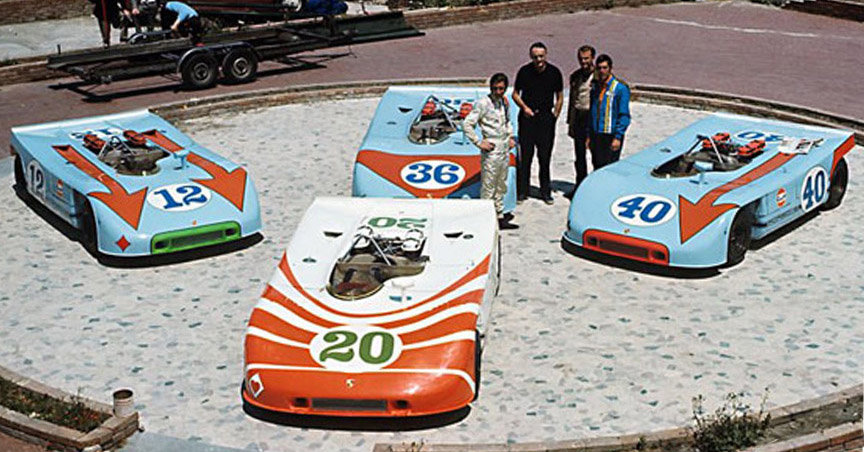
1970 Targa Florio video: “Seppi only had one speed – flat out”. Seppi is Porsche driver Jo Siffert.
1970 Targa Florio footage – nice video with good period matching music
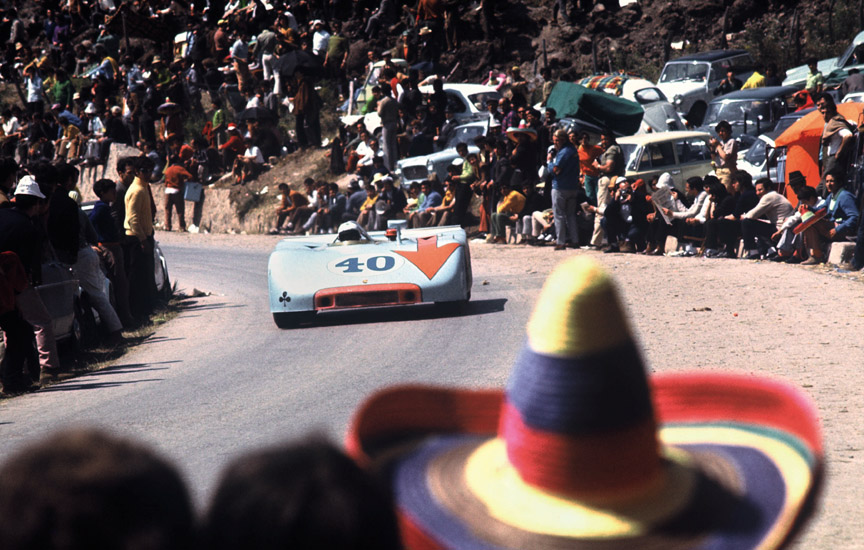
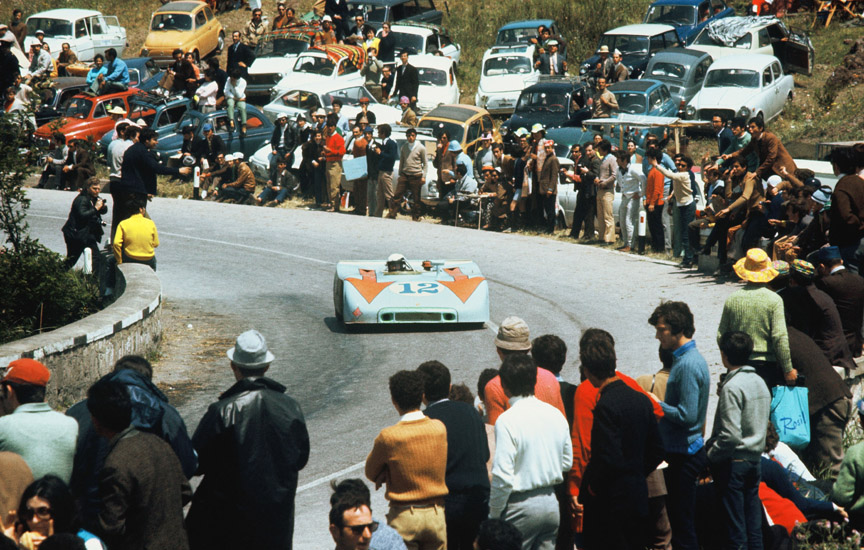
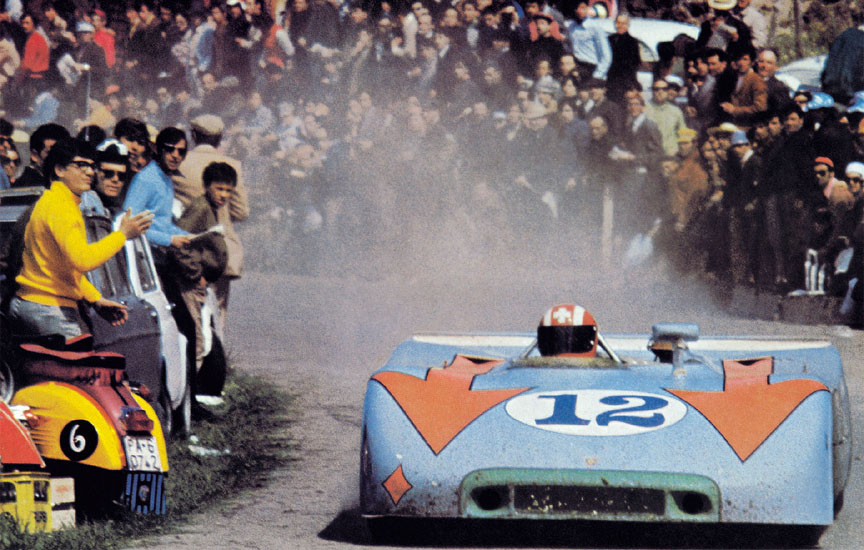
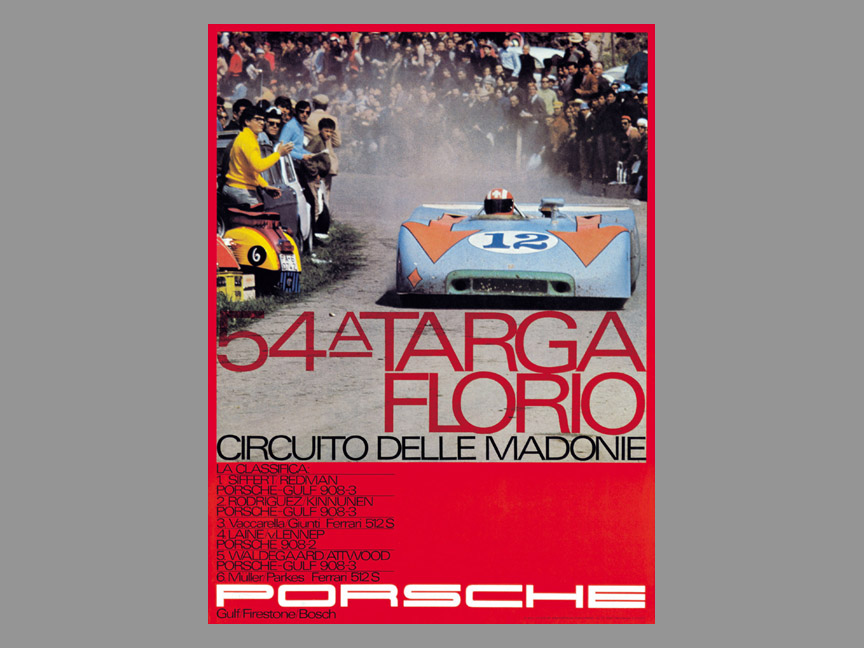
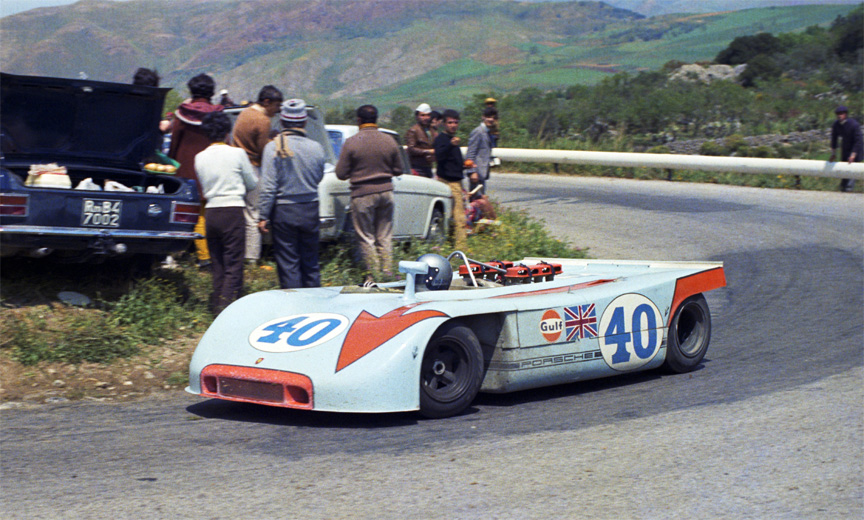
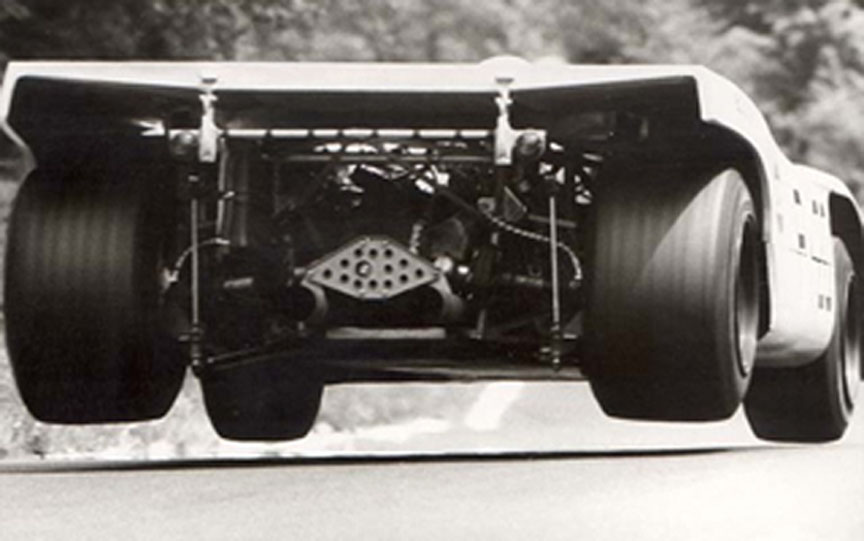
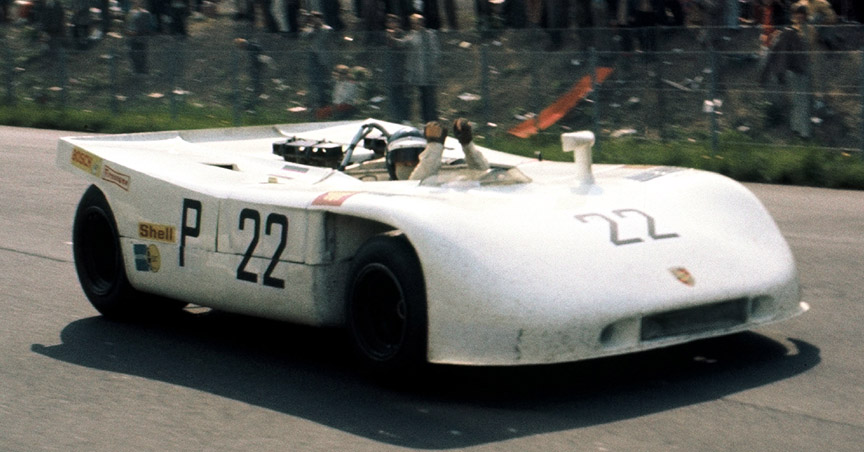
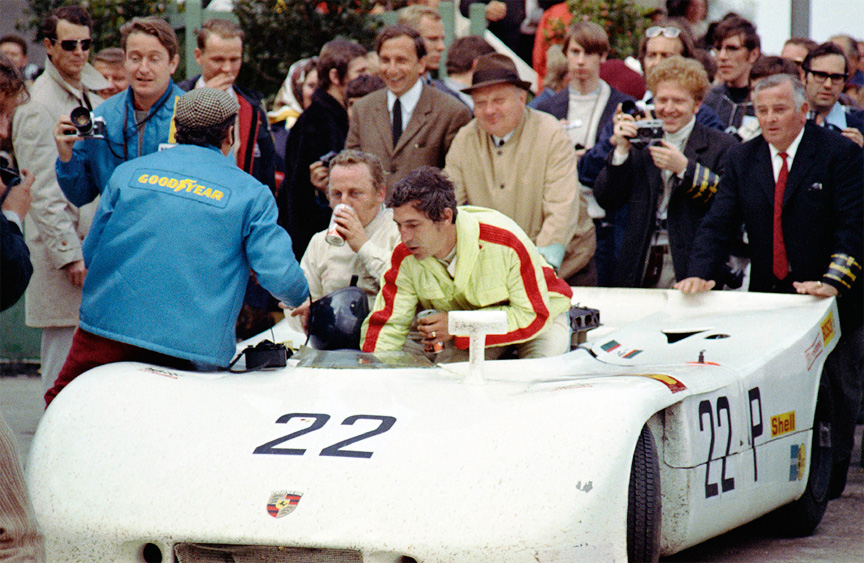
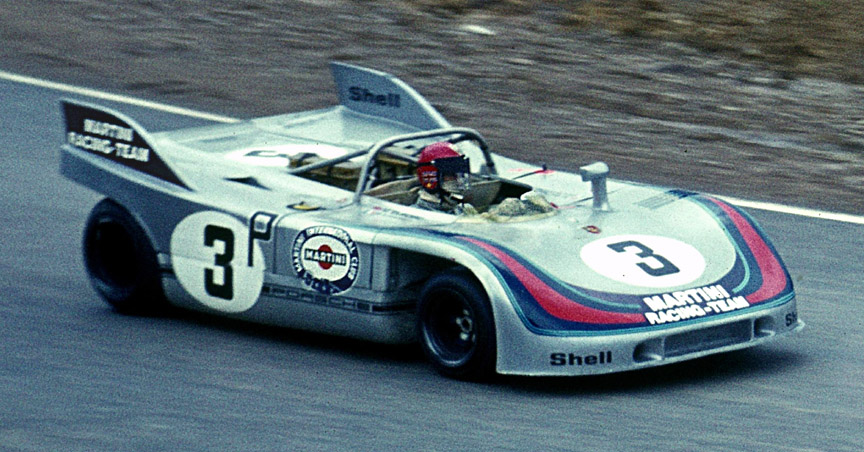
Porsche 908/03 Spyder (1971)
Premiere: 1971 May 16 at Targa Florio / Engine: 3.0-litre flat-8
Visually, the 1971 version of the 908/03 can be told by the large rear fins like the 1971 version 917. The 908/03 also got much larger safety bar and more power to the 3-litre 8-cylinder boxer (now developing around 280 kW). The new roll-over bar and larger wheels added 20 kg (now 565 kg/1245 lb). There were only two cars built as new ’71 cars (chassis 908/03-012 and 013), the rest being ’70 cars modified to ’71 specs.
The first race for the new version 908/03 was Targa Florio on May 16, 1971. Porsche had already won all podium places in 1969 and took 1-2 in 1970, so hopes were high for 1971. Three 908/03s were fielded, but unfortunately, all of them had to retire because of accidents. Two weeks later, at the 1971 Nürburgring 1000 km everything went “back to normal”.
Porsche took 1-2-3 victory with the 1971 version 908/03 Spyders. The winning #3 car was driven by Vic Elford/Gérard Larrousse. Porsche had won the Nürburgring event now already 5 years in a row and with most of the podium places (1967: 910-910-910, 1968: 908-907, 1969: 908-908-908, 1970: 908-908, 1971: 908-908-908). Ferdinand Piëch deserved to be really proud. Like in 1970, the 908/03 Spyders were only used for two events in the season.
The 908/03 cars were not used after the Nürburgring 1000 km race in May and were sold to private teams after the season. Private teams raced the cars until 1974 with a few wins and podiums: 1972 Monza 1000 km 2nd, Interlagos 500 km 1st, Interserie Nürburgring 2nd, 1973 Interserie Nürburgring 3rd, Norisring 3rd, Misano 3rd, Kyalami 9h 1st, 1974 Neubiberg 1st, Interserie Nürburgring 3rd…
Although 908/03 cars were not designed for round the clock races, some of the cars used by private teams were fitted with headlamps. The works team took a break in 1975, but provided support to customers contesting Le Mans. Reinhold Joest fielded a 908/03 ’71 fitted with the long tail of the 917/30 which was modified specifically for the top speeds at Le Mans. It finished 4th, which was the best result for a Porsche in 1975.
For the 1975 season Porsche also supplied 2.1-litre turbo engines for customers who wanted to keep running their 908/03s. 2.1-litres was the maximum allowed size for turbo engine to fit into the 3-litre class.
A Visual History
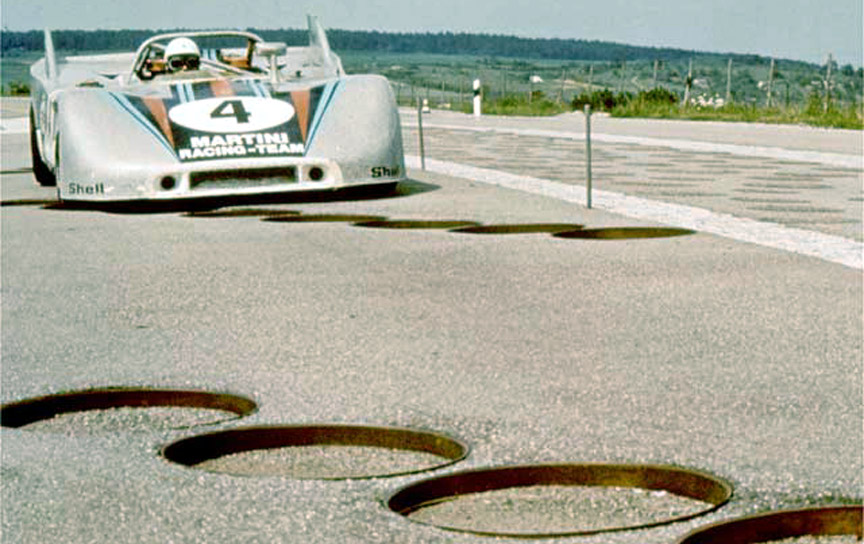
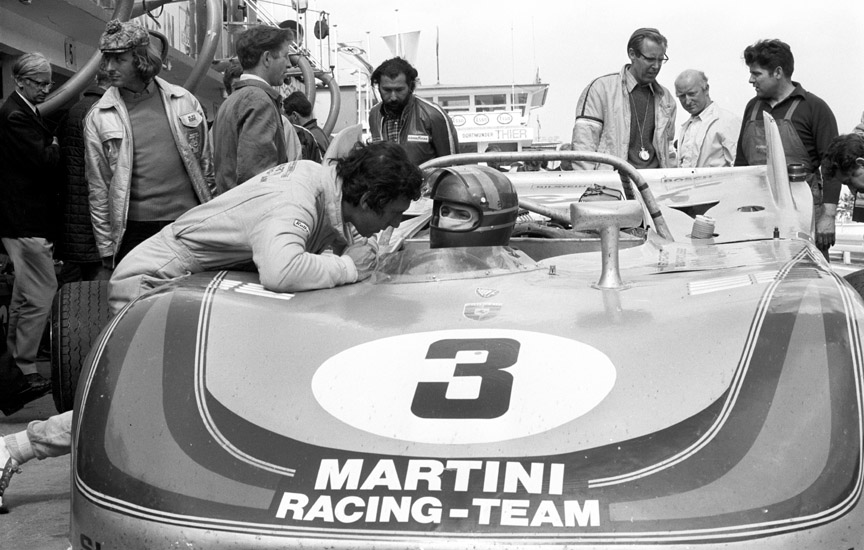
1971 Nürburgring 1000 km film showing Vic Elford, Henri Pescarolo, Jacky Ickx and other celebrities
